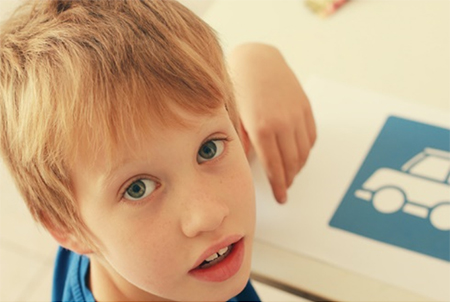 |
The study’s first author, Georgina Lynch, Ph.D., assistant professor in the WSU Elson S. Floyd College of Medicine, worked with children with autism while practicing as a speech-language pathologist. During more than 20 years of clinical experience with ASD, she noticed that the childrens’ pupils were dilated, even in bright light. Pupillary reflex is modulated in the brain by cranial nerves rooted in the brainstem, and adjacent cranial nerves affect the ability to acquire speech and language. That proximity made it seem logical to try this simple, noninvasive measure to determine whether there were pupillary reflex differences between typical development and autism. What’s more, earlier studies found abnormalities in the pupillary light reflex of children with ASD, so Lynch pursued the research. An objective screening method to bolster behavioral screening could help improve the accuracy and speed with which children are diagnosed, and a noninvasive method would be easy to use with very young children.
The study tested 36 children aged 6 to 17 who had been previously diagnosed with autism along with a group of 24 typically developing children who served as controls. Pupillary light reflexes were tested by trained clinical providers using a handheld monocular pupillometer device that Lynch developed through Appiture Biotechnologies, a spinoff company she cofounded. Because the pupils react together, it’s only necessary to test one eye. Analyzing the results, the researchers found that children with autism showed significant differences in the time it took for their pupils to constrict in response to light. Their pupils also took longer to return to their original size after light was removed.
Lynch is now working to expand testing to a group of 300 or more 2- to 4-year-olds across a larger number of clinical sites. Data from that study will be used to validate the earlier findings and will be integrated into the screening device to provide a benchmark providers can use to decide whether or not to refer a child for evaluation. Lynch also is preparing to file for Food and Drug Administration premarket approval for the device. The lower expense and portability of this monocular technology make it possible to move testing into clinical settings.
When we remember that the eye is an extension of the brain, we understand how the eye can be a window to brain changes and differences. We know, too, that analysis of tear film, the retina and other ocular structures can indicate systemic disease, often using noninvasive measures. The eye is truly a window to the whole.
Learn more about the eye and the brain with our CE, Unraveling Amblyopia, Strabismus, Phorias, and Tropias, at 2020mag.com/ce.












